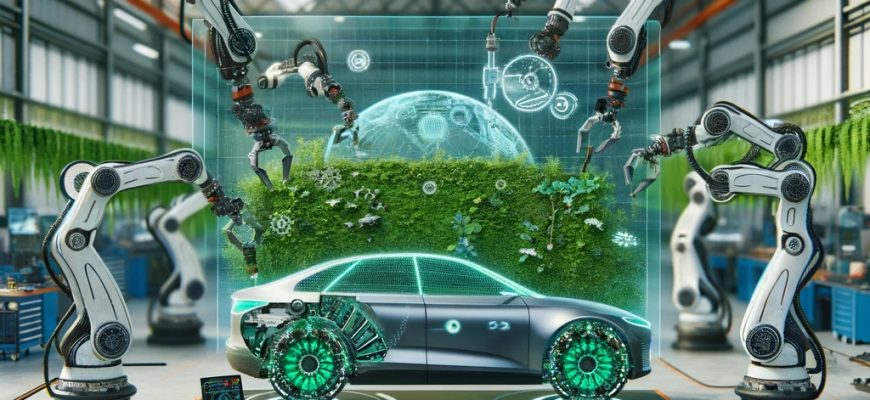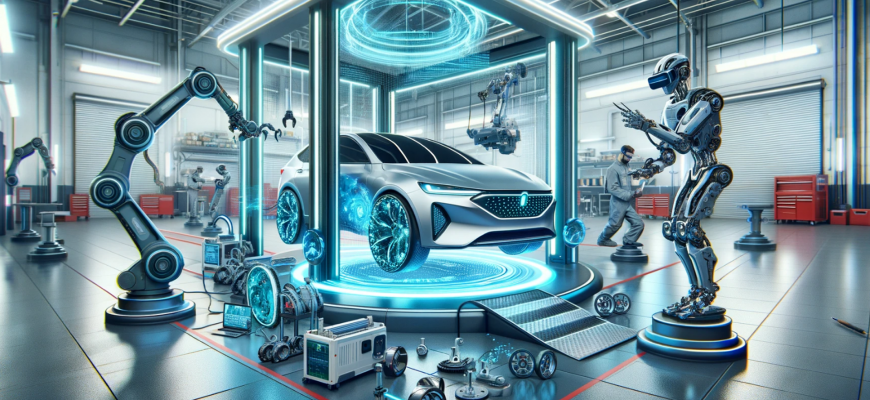The Future of Collision Repair in Adelaide: Innovations to Watch

In the heart of Adelaide, the collision repair industry is on the cusp of a revolution. With vehicles becoming increasingly sophisticated and customer expectations soaring, the demand for advanced, efficient, and eco-friendly repair solutions has never been higher. This article peels back the curtain on the most groundbreaking innovations shaping the future of collision repair in Adelaide, offering a glimpse into a world where technology not only repairs but revitalizes.
The Current State of Collision Repair in Adelaide
The collision repair sector in Adelaide, like many worldwide, grapples with a myriad of challenges. Skilled labour shortages, the escalating costs of traditional repair methods, and the rapid evolution of automotive technology are pushing the industry towards a tipping point. Traditional repair shops find themselves at a crossroads: evolve or risk obsolescence. In response, forward-thinking Adelaide repairers are turning to innovative solutions to pave the way forward. Dynamic Paint N Panel is proud to incorporate new and exciting repair methods while keeping our old-fashioned personal service at the very forefront of your crash repair experience.
Innovations Transforming Collision Repair
Advanced Diagnostics and Repair Technologies
The dawn of advanced diagnostics has ushered in a new era for collision repair. In Adelaide, cutting-edge diagnostic tools equipped with artificial intelligence (AI) and 3D scanning capabilities are beginning to become more prevalent. These technologies enable repair technicians to assess vehicular damage with unprecedented accuracy and efficiency, mapping out a precise repair plan that mitigates the chances of oversight.
Eco-Friendly Repair Processes
Sustainability is no longer just a buzzword but a guiding principle for the future of collision repair. Adelaide’s industry leaders are pioneering the use of eco-friendly materials and processes, significantly reducing the environmental footprint of repair work. Innovations include water-based paints, which emit fewer volatile organic compounds (VOCs), and recycling initiatives that ensure materials like metal and plastic find new life post-repair.
Automation and Robotics
Robotics has transformed the landscape of many industries, and collision repair is no exception. Automated technologies, from robotic painting arms to drones for damage assessment, are enhancing the precision of repairs while slashing turnaround times. This automation not only improves the quality of repair work but also addresses the labour shortage by shifting the workforce towards more skilled and technologically focused roles. While this technology is certainly exciting we are yet to these technologies become common in Australia (for now!)
Mobile Repair Services
In an age where convenience is king, mobile repair services are gaining traction in Adelaide. These services offer the ultimate convenience by bringing the repair shop to the customer, whether at home or work. Mobile repair units are equipped with the tools and technologies needed to perform a wide range of repairs on-site, providing a flexible and customer-centric approach to collision repair.
Impact on Industry and Consumers
These innovations are set to redefine the collision repair experience for both the industry and consumers. For customers, the benefits are clear: faster, more accurate repairs that often come at a lower cost and with a smaller environmental impact. On the industry side, the shift towards high-tech repair solutions opens up new avenues for business growth and development, albeit with a learning curve for adopting new technologies.
Challenges and Considerations
Despite the clear advantages, the transition to these innovative repair methods is not without its hurdles. High initial investments in technology, ongoing training for staff, and navigating regulatory landscapes are significant considerations for Adelaide’s repair shops. Moreover, as the industry evolves, so too must consumer perceptions and understanding of what constitutes quality collision repair in the modern age.
The future of collision repair in Adelaide is bright, illuminated by the beacon of innovation. From advanced diagnostics and sustainable practices to automation and the convenience of mobile services, the industry is poised for a transformative leap forward. As Adelaide’s repair shops embrace these technologies, they not only ensure their survival but also elevate the standard of repair for vehicles hitting the road tomorrow. In this rapidly changing landscape, one thing remains certain: innovation is the key to driving the future of collision repair in Adelaide.
The Latest Trends in Auto Body Repair Technologies: Navigating the Future of Automotive Care in Australia

The auto body repair industry is witnessing a remarkable transformation, fueled by technological advancements that promise to redefine the way we maintain and repair our vehicles. In Australia, where the automotive sector is a pivotal part of the economy and daily life, these innovations are not just enhancing operational efficiencies but are also significantly improving the consumer experience. This article delves into the latest trends in auto body repair technologies, highlighting how they benefit Australian vehicle owners.
Paintless Dent Removal (PDR) Techniques
Paintless Dent Removal (PDR) represents a significant leap forward from traditional dent repair methods. And it’s something we are particularly proud of at Dynamic Paint N Panel. This technique involves the meticulous manipulation of dents from behind the vehicle’s paneling, preserving the original paintwork. For consumers, the advantages are manifold: PDR offers a cost-effective solution to dent repairs, without the need for repainting, thereby maintaining the vehicle’s value and aesthetic appeal. Moreover, PDR can often be completed in a fraction of the time required for conventional repairs, providing a swift return to the road, and at a lower cost than conventional repairs.
Advanced Diagnostics and Robotics
The integration of advanced diagnostics and robotics in auto body repair is setting new standards for accuracy and efficiency. Sophisticated scanning tools can now detect minute damages invisible to the naked eye, ensuring comprehensive repair. Robotics, on the other hand, brings unmatched precision to the repair process, reducing the possibility of human error. For the Australian consumer, this translates to more accurate estimates, superior repair quality, and ultimately, enhanced safety and reliability of the repaired vehicle.
Augmented Reality (AR) in Repair Services
Augmented Reality (AR) is introducing a new dimension to auto body repair, from training technicians with virtual simulations to enhancing customer service. AR can project virtual images of repairs over the actual vehicle, helping consumers understand the work required and the parts involved. This technology fosters transparency and trust, empowering Australian consumers with knowledge and insight into their vehicle repairs.
Augmented Reailty is still largely untested and relies heavily on AI technology and training of specialist technicians – is this style of repair still decades away, or just around the corner?
The Impact of Insurance and Warranty Advances
Technological advancements are also streamlining the insurance claims and warranty process, offering faster and more efficient service. Digital platforms enable quicker submission of claims and documentation, reducing processing times and getting repairs started sooner. For Australians, this means less downtime without their vehicle and a smoother, more convenient claims experience.
Challenges and Considerations
Despite the promising advancements, challenges such as the need for skilled technicians and the initial cost of adopting new technologies persist. Additionally, ensuring equitable access to these advanced repair services across both urban and rural Australia remains a concern.
The landscape of auto body repair in Australia is evolving, driven by technological innovations that promise improved efficiency, sustainability, and customer satisfaction. As the industry continues to embrace these trends, Australian consumers stand to benefit from repairs that are quicker, more affordable, and of higher quality than ever before. Embracing these advancements is not just about keeping pace with technology but about moving forward into a future where auto care is more accessible, transparent, and aligned with the values of today’s society.
One thing that never changes is DPPs commitment to ensuring flawless repairs, and top notch customer service no matter what technology we have at our disposal. We started using traditional methods and have continued to evolve with advances in technology. To see how we can improve the of your car’s body work call us today. We love helping South Australian drivers beaming with pride over their car.

